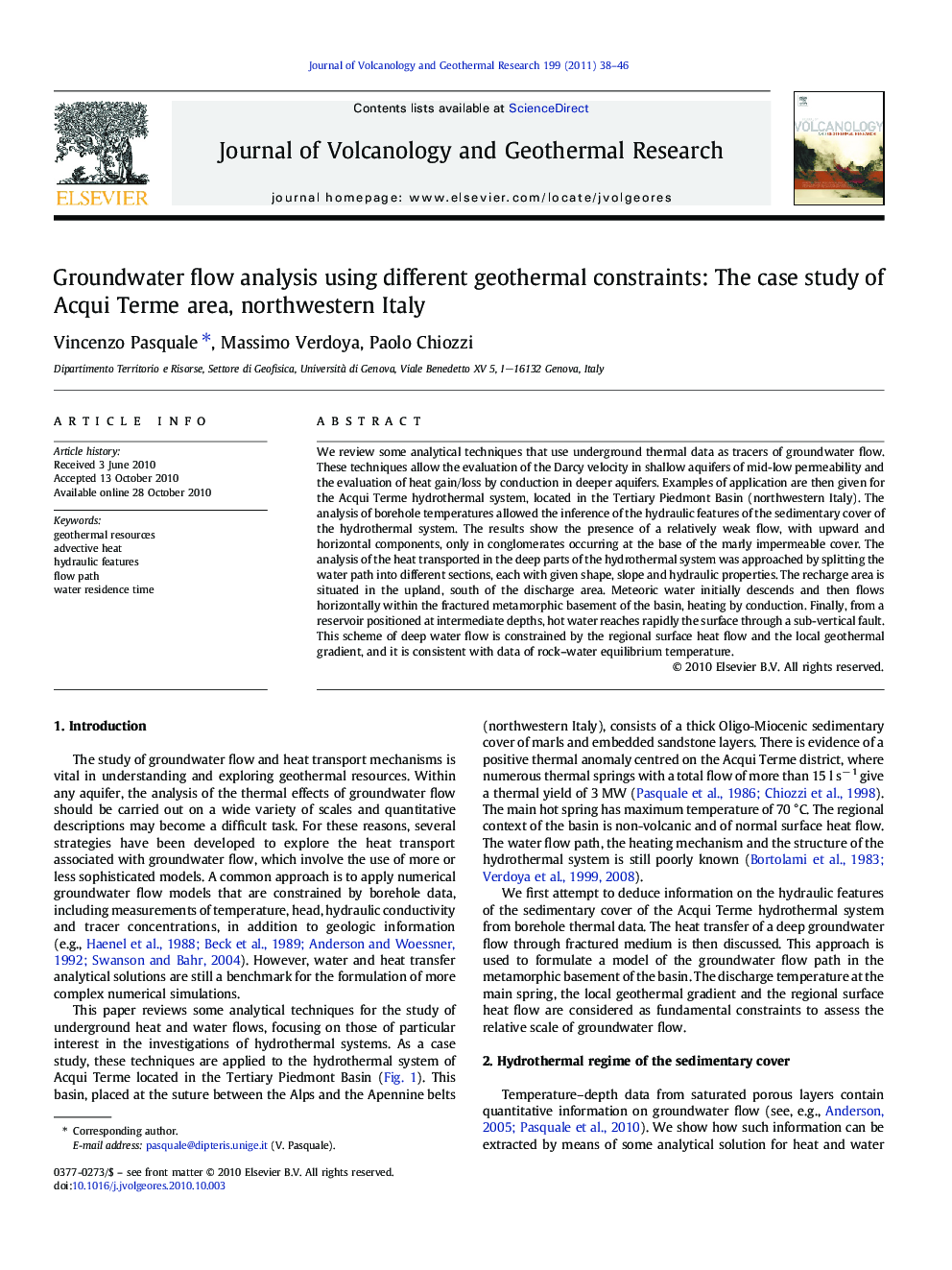| Article ID | Journal | Published Year | Pages | File Type |
|---|---|---|---|---|
| 4713937 | Journal of Volcanology and Geothermal Research | 2011 | 9 Pages |
We review some analytical techniques that use underground thermal data as tracers of groundwater flow. These techniques allow the evaluation of the Darcy velocity in shallow aquifers of mid-low permeability and the evaluation of heat gain/loss by conduction in deeper aquifers. Examples of application are then given for the Acqui Terme hydrothermal system, located in the Tertiary Piedmont Basin (northwestern Italy). The analysis of borehole temperatures allowed the inference of the hydraulic features of the sedimentary cover of the hydrothermal system. The results show the presence of a relatively weak flow, with upward and horizontal components, only in conglomerates occurring at the base of the marly impermeable cover. The analysis of the heat transported in the deep parts of the hydrothermal system was approached by splitting the water path into different sections, each with given shape, slope and hydraulic properties. The recharge area is situated in the upland, south of the discharge area. Meteoric water initially descends and then flows horizontally within the fractured metamorphic basement of the basin, heating by conduction. Finally, from a reservoir positioned at intermediate depths, hot water reaches rapidly the surface through a sub-vertical fault. This scheme of deep water flow is constrained by the regional surface heat flow and the local geothermal gradient, and it is consistent with data of rock–water equilibrium temperature.
Research Highlights► We review some techniques which use underground thermal data as tracers of groundwater flow. ► Examples of application are given for the Acqui Terme hydrothermal system (northwestern Italy). ► Deep water flow is constrained by means of the regional heat flow and the local geothermal gradient.
